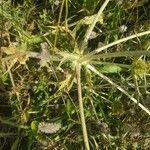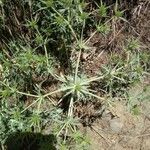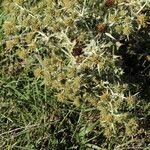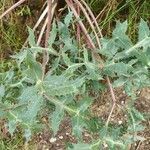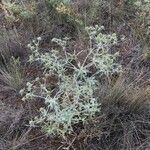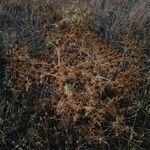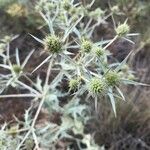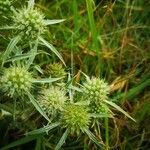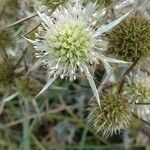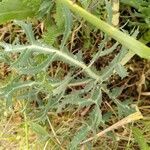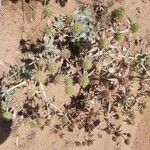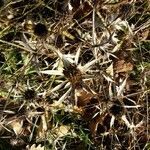Pale green, branched, erect perennial, with a stout taproot. Stems solid, slightly grooved, striate, up to 70 cm high. Basal lvs ovate, petiolate, pinnatisect with lobes again pinnately cut, spinose-serrate, 5-20 cm long; stem lvs similar to basal but reduced and amplexicaul. Infl. much-branched; capitula many, ovoid, pedunculate, pale green to brown, 8-15 mm diam.; bracts 4-7, linear-lanceolate to narrowly elliptic, spinous, 15-30 mm long, entire, or with 1-(2) pairs of marginal spines; bracteoles entire, spinous. Fls numerous, white or purplish, 1-2 mm diam.; calyx teeth lanceolate, 1.5-2.5 mm long. Fr. densely scaly, the scales overlapping.
More
A short perennial herb. The leaves at the base are leathery. They are oval and have 3 lobes. They have spiny teeth. The stalks do not have wings. The leaves on the stems do not have stalks. They clasp the stem. The flowers are pale greenish-white or greenish yellow. They are in rounded or spreading heads. They are 10-15 mm across. There are 6-7 bracts. These are sword shaped and 15-45 mm long.
